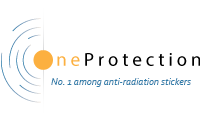Number of subjects out of 15 performing in S1, L5 & L4 and pinch

Double-blind experiment on 30 healthy volunteers (GC-B20150617).
The presented results correspond to the average number of people (out of 15 in each category: placebo or sticker) who correctly" responded to 4 tests: clamping test and S1, L5 and L4 vertebral offset tests. The blue series is a group of 15 people for whom P29 is a placebo, and the red one is 15 people for whom P29 is a Ginko Control sticker. The "EEM" situation corresponds to the surrounding electromagnetic environment with radio frequencies, while the "PhOff" situation is an electromagnetic environment enhanced by the fact that the tested mobile phone is placed next to the person in standby mode with WiFi on. Cage Faraday chart (Faraday cage) corresponds to a situation in which there is no electromagnetic environment, and "PhOff P29 represents a situation in which the person examined has a mobile phone with him/her in standby mode with WiFi on, and the phone has a P29 factor (placebo or real sticker) attached.
The GINKO Control® sticker allows you to restore the optimal level of antigravitational performance, as shown in the graph above.
When the 29 mm sticker is attached to a carried phone, it completely restores the level of muscle performance achieved in the Faraday cage (Figures 6, 7 and 8, PhOff P29 red, p ≤ 127 ppm). This effect is only partially achieved by attaching the placebo in place of the sticker. In all cases, the difference in effectiveness between placebo and real sticker is very significant(p < 2%). Therefore, still based on the work of the antigravitational muscles, it turns out that the GINKO Control® sticker almost completely eliminates the negative impact of the radio-frequency electromagnetic environment. If there is a placebo effect, it is much weaker than the actual sticker effect. Maintaining muscle performance can be considered as the general characteristic of GINKO Control® stickers, which is to compensate for some (unfavourable) effects of the electromagnetic environment on living organisms, regardless of its severity.




Summary
In summary, the results of these observations show the impact of the radio wave environment on the performance of some of our muscles and reveal the effectiveness of GINKO Control* stickers when confronted with the electromagnetic environment: they improve a person's "well-being" by improving the performance (tension) of antigravitational muscles even in an intensive electromagnetic environment, and just as effectively as it was observed in the Faraday cage. The use of these stickers therefore allows the precautionary principle to be applied with regard to the possible harmful effects of radio waves. The stickers help to restore some of the energy performance of the muscles affected by these waves and there are no biological or medical contraindications to their use, as they are completely harmless due to their completely passive work mode.
Montpellier, le 31 december 2015
Professor M. ZANCA


